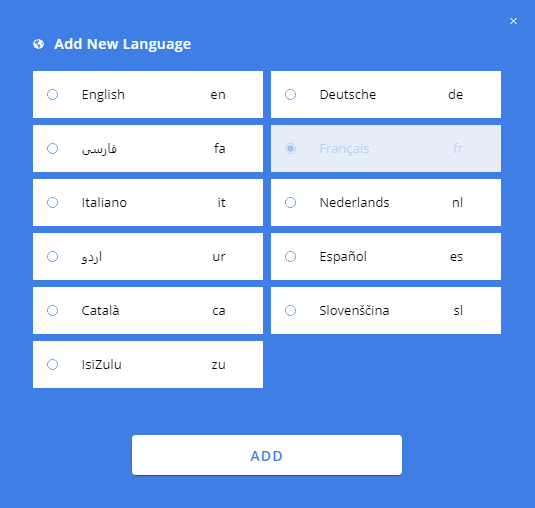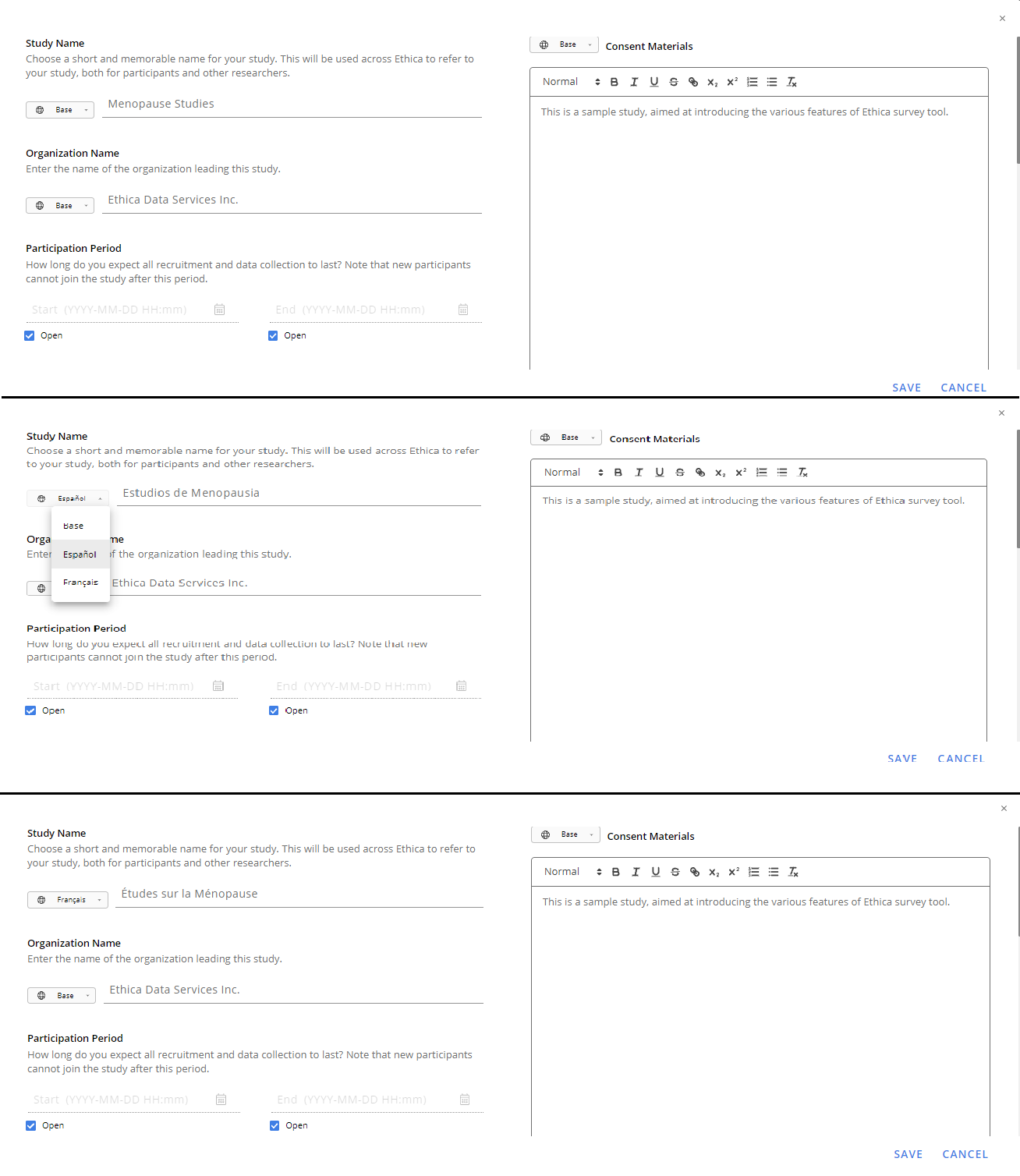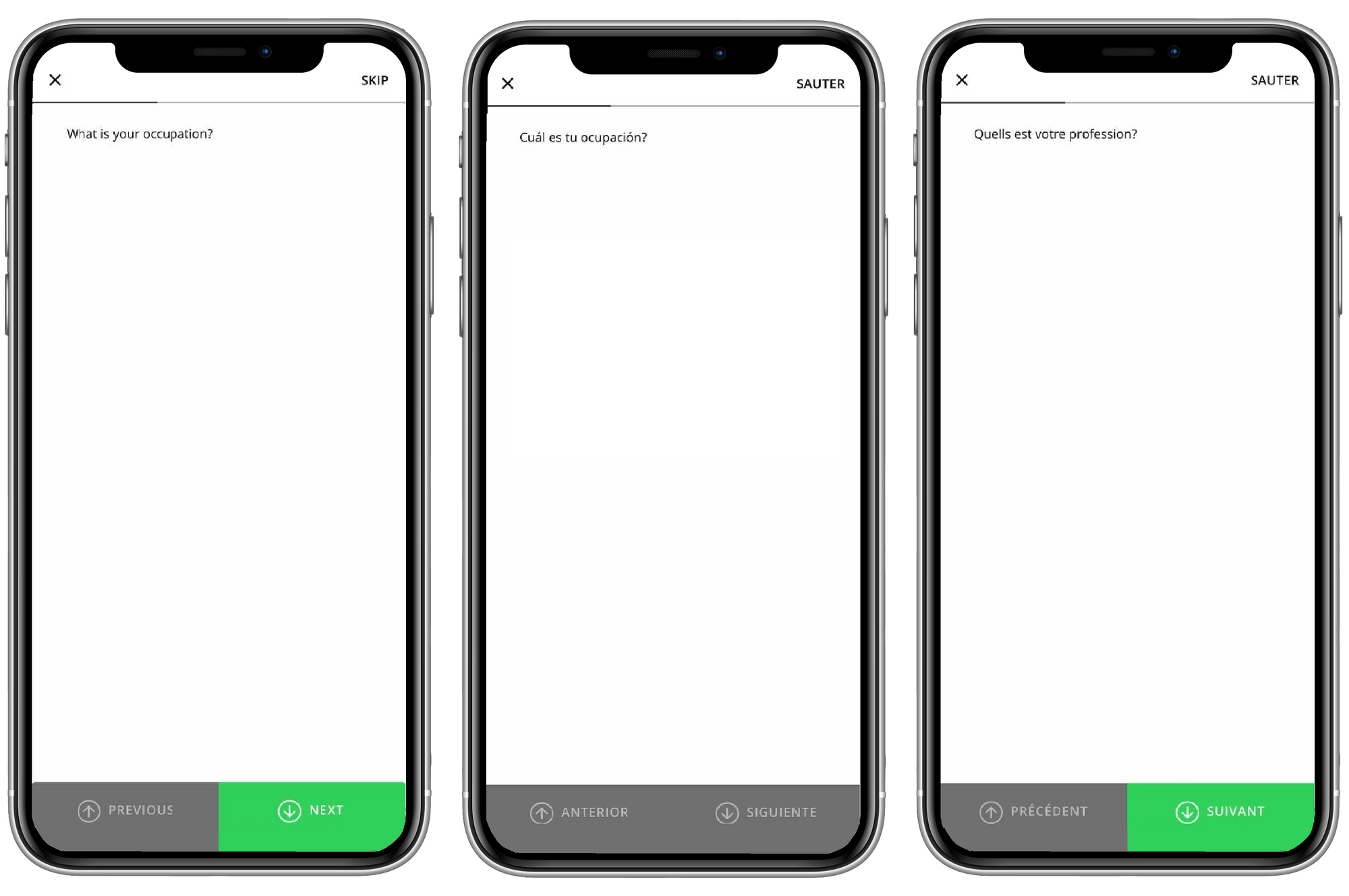Multilingual Studies: The Key to Inclusive Research

Inclusive research was first described as studies including approaches that facilitated working with participants with learning/intellectual disabilities. Scholars are increasingly expanding the scope of this definition to cover any research project that attempts to work with groups of people who are usually neglected in studies. These people could belong to minority nationalities, races, sexual orientations, or gender identities. They could come from lower economic classes and unnoticed age or language groups.
One of the most common and effective methods applied by researchers to achieve such inclusivity is localization. Researchers can appeal to a more diverse language group, include a larger collection of participants, reach a less biased conclusion, and increase the applicability of their research results.
Localization is one of the recently upgraded features in Ethica that has immensely improved the reliability and flexibility of our research tool. Currently, Ethica offers its services in 10 languages: English, German, French, Italian, Dutch, Urdu, Spanish, Catalan, Slovenian, and IsiZulu. We strive to expand this list and you can help us with this task as well. Participants can view the app’s features in any of these languages and researchers can translate their studies into as many languages as they like.
Imagine you are conducting a study for a mainly English-speaking participant group. However, you would like to reach out to the French-speaking and Spanish-speaking communities as well. The first language of your study is called the Base language, and it can be set to any of the 11 languages mentioned above. Assuming that the Base language for this study would be English, you would need a French and a Spanish localized version of it. There are four easy steps that can get you there:
1-Edit Your Study
Go to the Researcher Dashboard and open your study. On the bottom of the Basics page, you can see the Localization box.

2-Add Languages
By clicking on Add, a list of languages will appear. In this example, we choose French.

You can only add one language each time you click on Add. In our example, we can add Spanish to the study’s languages by clicking on Add and selecting Spanish from the list. You can see and edit a list of your selected languages in the Localization box.

3-Localize the Study’s Info
Now it’s time to add translations to your study’s title, consent form, and other study information. While on the Basics page, you can see a box containing the Study ID. On the top right side of that box is the Edit button. Click on it.
Now you can choose Base (English), Español (Spanish), and Français (French) from the Language Selector and type in your translations.

4-Adjust Your Activities
Next, you need to translate the content of your survey into your selected languages. Go to the Survey Editor page and add your questions. You can choose Base (English), Español (Spanish), and Français (French) from the Language Selector to type in the content of your questions in the respective languages. Below is an example of one question from our survey in these three languages.

The language of studies displayed in Ethica’s participant app is set to the participant’s system language by default. Participants can also choose a language for the app from Language in the participant app’s Settings. In our case, the study will be presented in Spanish, French, or English to participants based on their selected or system language.

Note that if the researcher doesn’t provide any translation for some parts of the study, the Base language will be displayed to participants.
By adding more language(s) to your study, you can offer a localized version of activities to participants with different ethnic and geographical backgrounds. Increasing the diversity of your respondents can surely induce more reliable and realistic conclusions.
